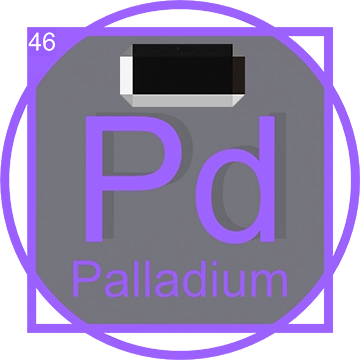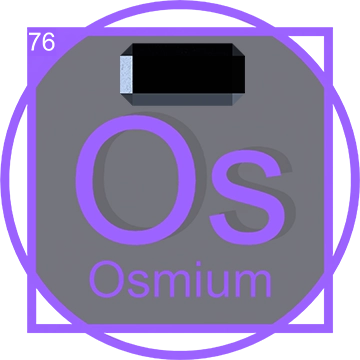Ruthenium (Ru): Properties, Discovery, and Applications in Modern Technology
Introduction to Ruthenium
Ruthenium, symbol Ru, is a rare transition metal belonging to the platinum group on the periodic table. Known for its hardness and resistance to corrosion, Ruthenium plays a significant role in both scientific research and practical applications, ranging from electronics to chemical manufacturing.
Discovery of Ruthenium

Ruthenium was discovered in 1844 by the distinguished Russian scientist Karl Ernst Claus at the University of Kazan. Through meticulous chemical analysis and isolation techniques, he successfully identified the element from platinum ore extracted from the rich deposits in the Ural Mountains. The discovery process involved dissolving the ore in aqua regia, precipitating the platinum as ammonium chloroplatinate, and then separating the other metals, among which was Ruthenium. Claus's work not only added a new element to the periodic table but also highlighted the complexity of the platinum ores found in the region. The name 'Ruthenium' is derived from 'Ruthenia', the Latin word for Rus, a historical area that encompasses parts of modern Russia and Ukraine. This name was chosen to honor the region where the metal was first isolated, reflecting the importance of geographical and cultural ties in the naming of new elements during that era.
Ruthenium in the Periodic Table
In the periodic table, Ruthenium is positioned in group 8, among other platinum group metals (PGMs). It is characterized by its high melting point and multiple oxidation states, which make it extremely versatile in chemical reactions. Learn more about its chemical behavior and its neighbors in the periodic table.
Physical and Chemical Properties of Pure Ruthenium
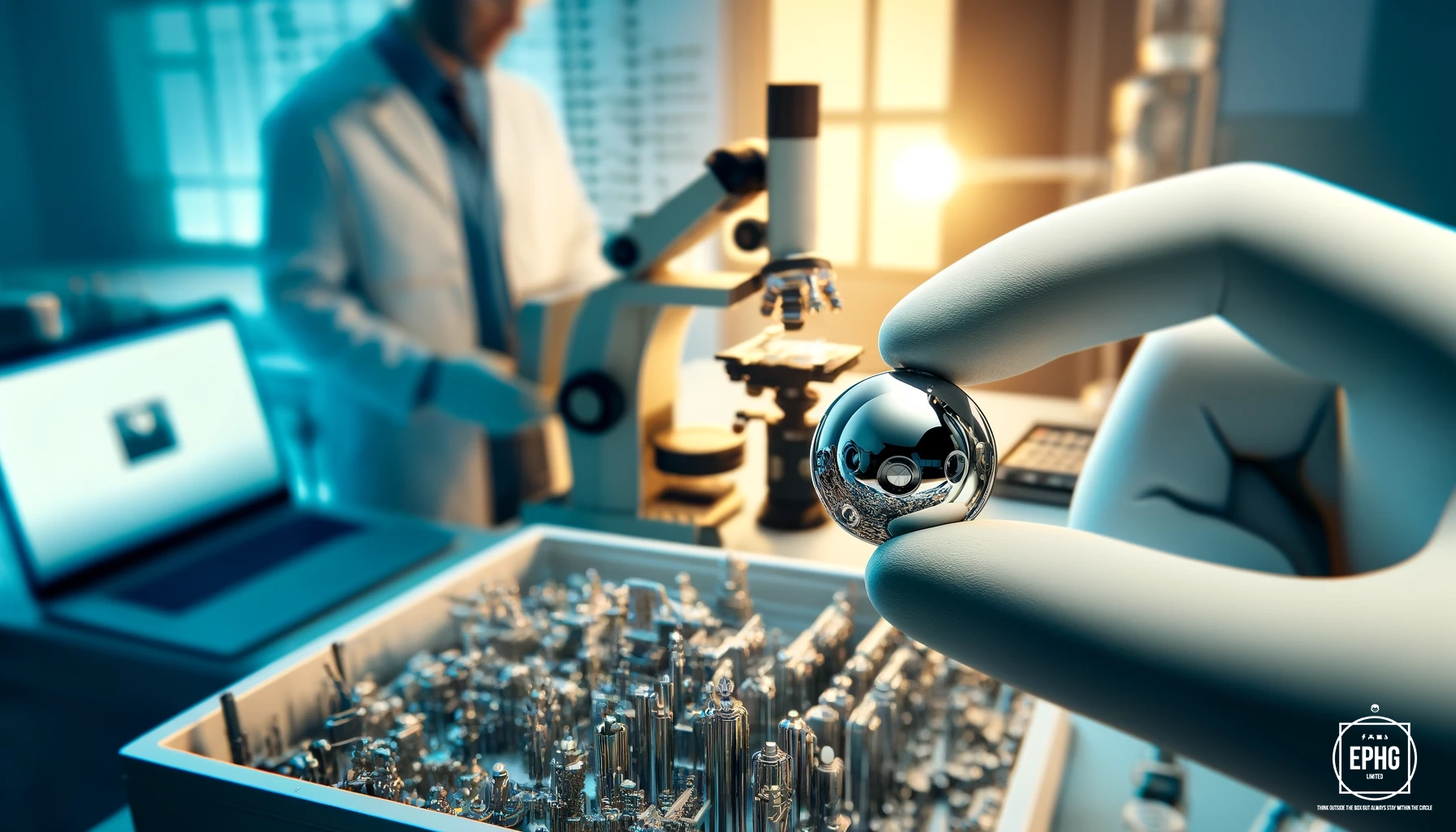
Pure Ruthenium is a hard, white metal that exhibits a remarkable ability to withstand external stresses and chemical reactions. It remains untarnished at room temperatures and only begins to oxidize in the presence of oxygen at high temperatures. The compounds of Pure Ruthenium often show unusual electronic and catalytic properties, making them highly valuable in various industrial processes where reliability and efficiency are paramount.
Applications and Technological Uses of Ruthenium
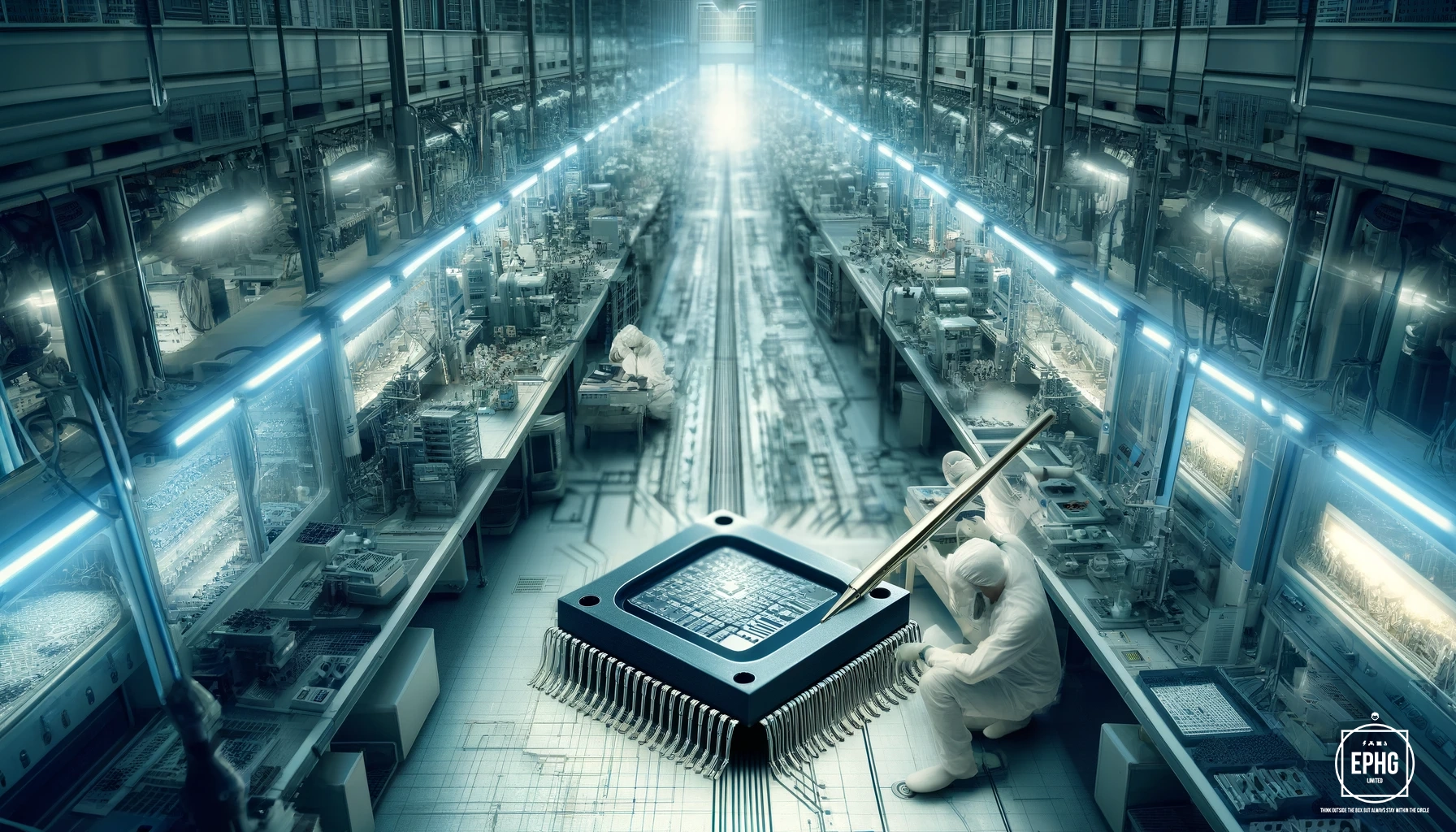
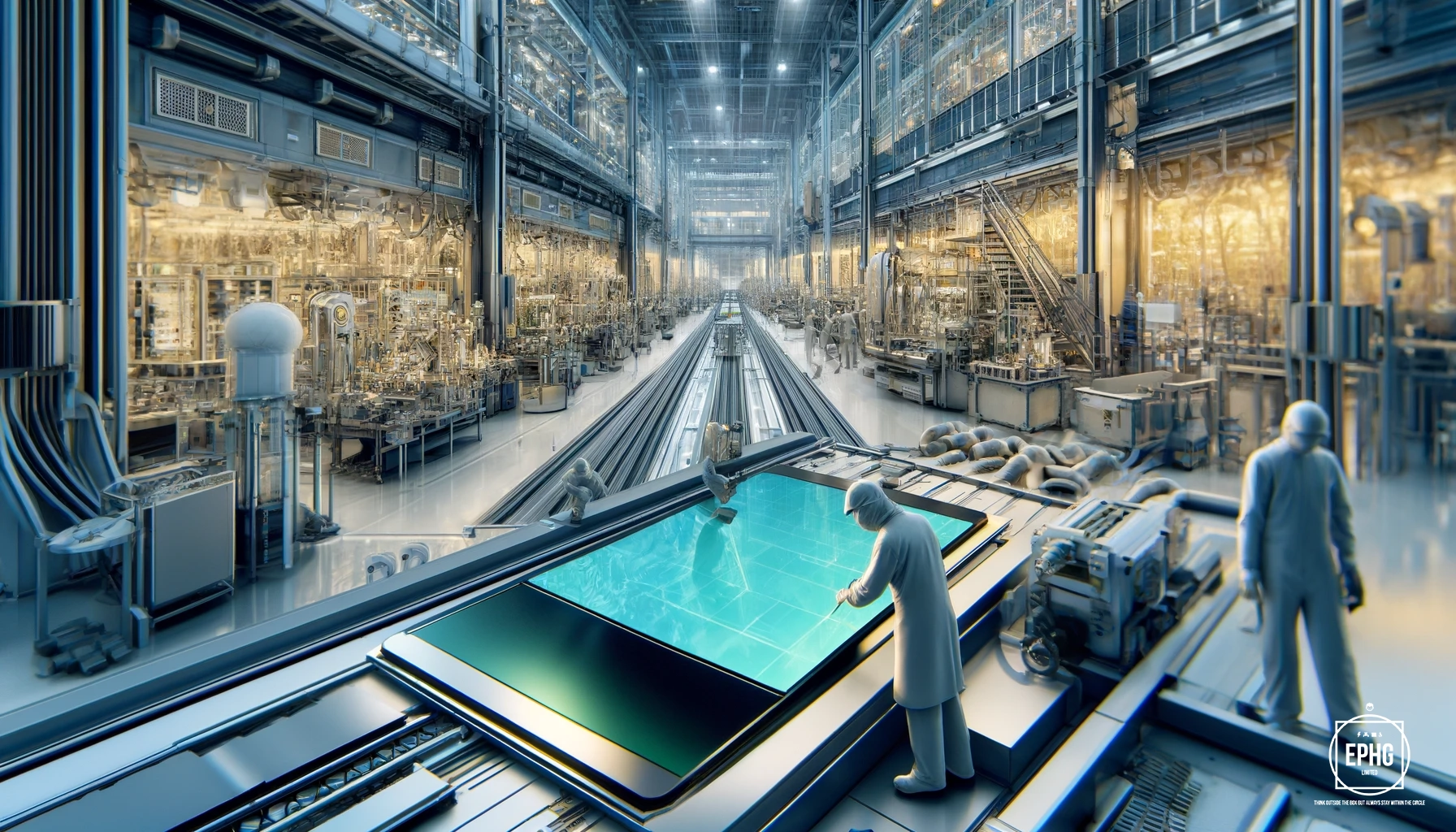

The unique properties of Ruthenium allow for its use in a wide array of applications, making it a valuable asset across multiple industries:
- Catalysis: Ruthenium is extensively used as a catalyst in a variety of chemical reactions, including hydrogenation and ammonia synthesis. These processes are crucial for producing fertilizers that help increase agricultural productivity and biofuels that offer an alternative to fossil fuels. The efficiency of Ruthenium as a catalyst in these reactions helps in achieving higher yields and more sustainable chemical processes.
- Electronics: In the electronics industry, Ruthenium is prized for its excellent electrical conductivity and durability. It is used in the production of chip resistors, electrical contacts, and other components where stable and reliable electrical conductivity is necessary. Its use extends to advanced technology applications such as the fabrication of thin-film coatings for electronic chips, enhancing their performance and longevity.
- Chemical Manufacturing: Ruthenium-based compounds find significant applications in the field of renewable energy, particularly in solar energy conversions. These compounds are utilized in photovoltaic cells to improve the efficiency of light absorption and conversion into electricity. Additionally, Ruthenium is involved in the manufacturing of organic light-emitting diode (OLED) screens, which are used for creating clearer and more energy-efficient display screens for televisions, smartphones, and other devices.
- Jewelry: Due to its hardness and brilliant shine, Ruthenium is a popular choice for plating high-end jewelry and watches. The metal provides a wear-resistant, tarnish-resistant finish that enhances the aesthetic appeal and durability of fine jewelry pieces. Its hypoallergenic properties also make it suitable for consumers sensitive to other metals.
Extraction and Sources of Ruthenium

Ruthenium is primarily obtained as a byproduct of nickel and platinum mining. The extraction process involves several stages of complex handling, as Ruthenium is typically found in ores mixed with other platinum group metals such as platinum, palladium, and osmium. Major mining regions include the Bushveld Complex in South Africa, the Sudbury Basin in Canada, and the Norilsk region in Russia. These locations are rich in mineral deposits where Ruthenium and other PGMs are extracted through sophisticated metallurgical processes.
During the extraction, minerals undergo flotation to concentrate the PGM-containing materials, followed by smelting and chemical processing to separate each element. Ruthenium is then purified through solvent extraction and chemical reduction techniques.
Another area of extraction is the Unki Mine in Midlands, Zimbabwe.
Modern Applications of Ruthenium
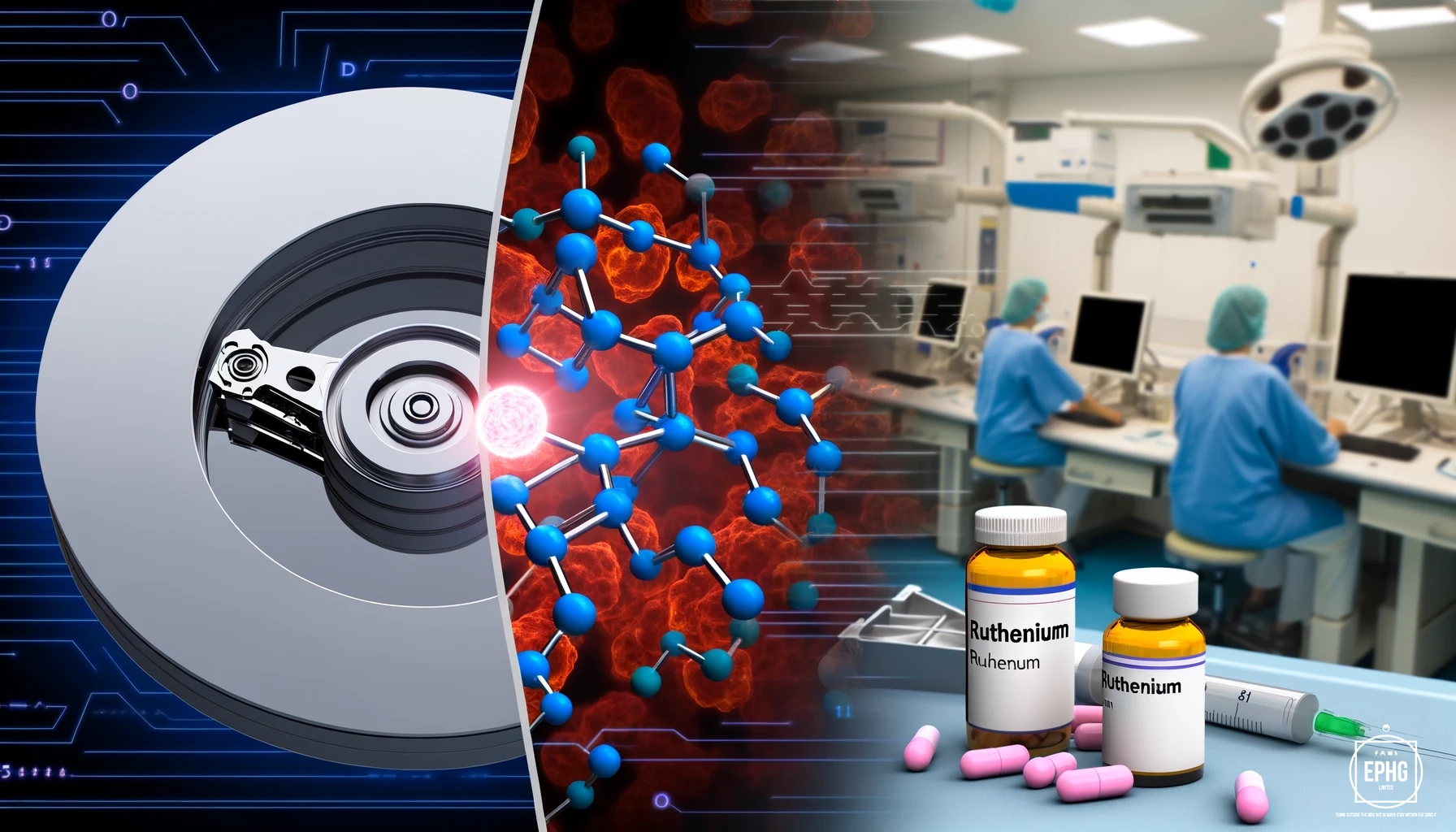
In the modern era, Ruthenium has found significant applications across various industries:
- Technology: Ruthenium is used in hard disk drives and as a key component in advanced semiconductor devices for its electrical properties.
- Medicine: Ruthenium compounds are being investigated for use in cancer treatment drugs due to their ability to bind to biological molecules, potentially targeting cancer cells without harming healthy tissue.
- Energy: Ruthenium-based catalysts are crucial in water splitting reactions in hydrogen fuel cells, representing a step forward in renewable energy technologies.
Future of Advanced Ruthenium Applications in Space Technology

In a visionary depiction of space technology of the future, Ruthenium takes center stage, enhancing the functionality of supercomputers and hard disk drives aboard a futuristic space station. This image showcases an astronaut equipped with a high-tech Ruthenium-based watch, symbolizing the integration of sophisticated technology into daily operations in space. Furthermore, the scene illustrates Ruthenium's role in medical advancements, with nanobots utilizing Ruthenium-based compounds to target diseases with unprecedented precision. This setting not only reflects the potential of Ruthenium in enhancing next-generation technology and health solutions but also highlights its importance in the exploration and habitation of outer space.


